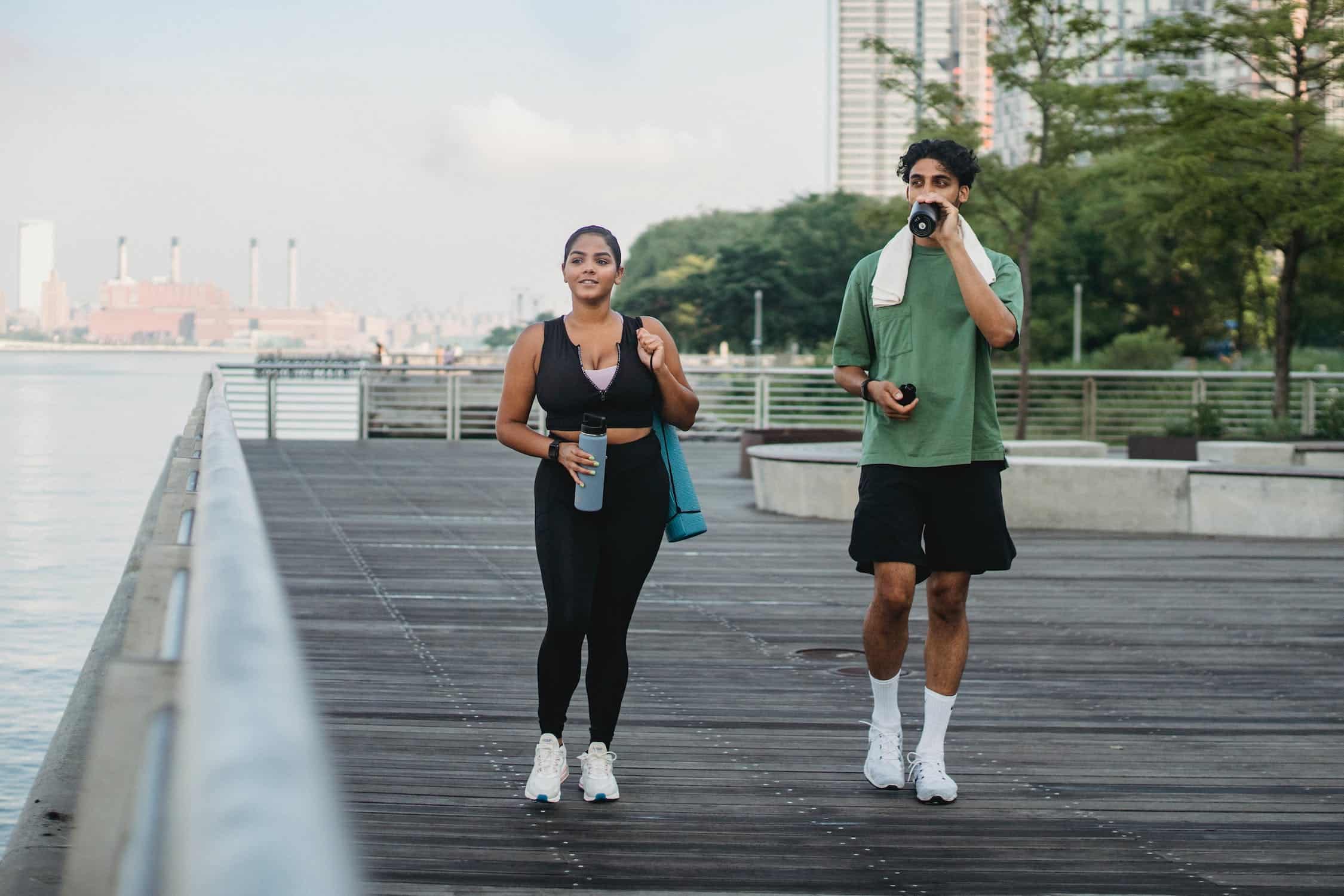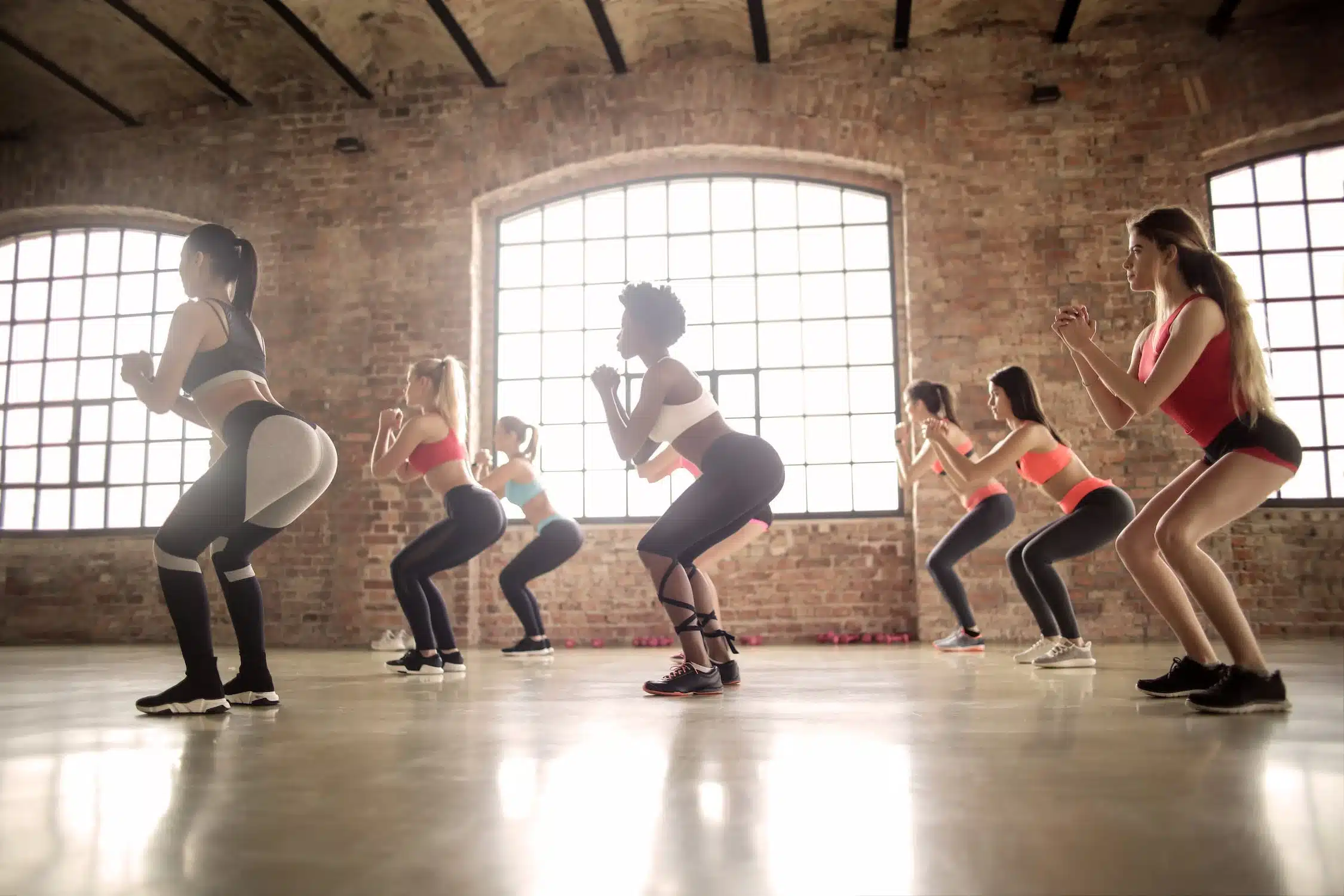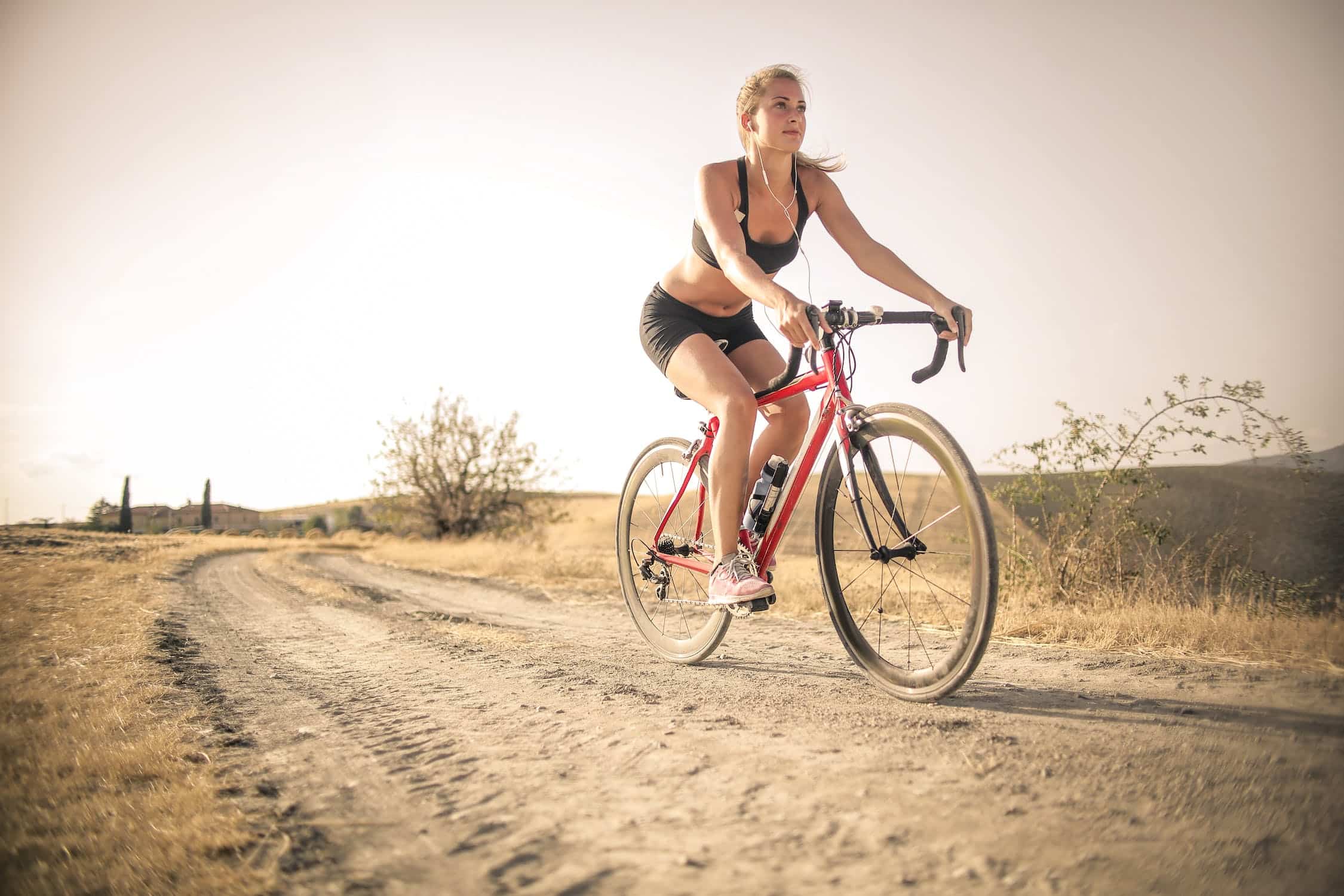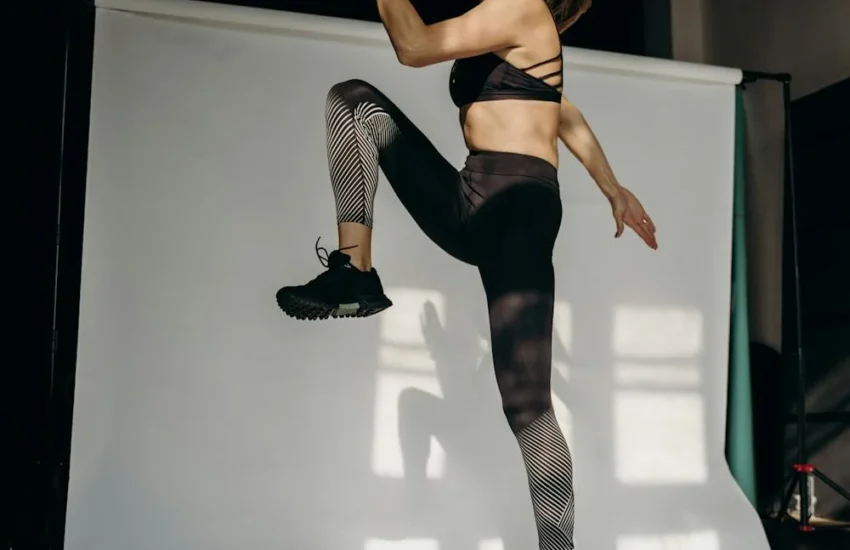7 Best Weight Loss Exercises for Beginners as Self-Care
Embarking on a weight loss journey can be overwhelming, especially if you’re a beginner. But fear not! With the right exercises and a positive mindset, you can achieve your fitness goals and transform your body. In this blog post, we’ll explore the best weight loss exercises for beginners. Get ready to break a sweat, have fun, and discover the joy of moving your body towards a healthier and fitter you!
Walking, Best Weight Loss Exercises for Beginners
Walking is not just a simple exercise; it’s a powerful tool for weight loss and overall well-being. Let’s delve deeper into the benefits and ways to maximize your walking routine to fit your ideal workout.

Tips to maximize the benefits of walking for weight loss, consider the following tips:
- Gradually increase intensity: Start with a comfortable pace and gradually increase your speed as you build stamina. Incorporate intervals of power walking or inclines to challenge yourself and burn more calories.
- Monitor your steps: Consider using a pedometer or fitness tracker to track your steps. Aim for at least 10,000 steps per day and gradually increase it over time.
- Set goals: Set specific goals to keep yourself motivated. It could be increasing your daily step count, completing a certain distance, or participating in a charity wwalk.
- Walk with a buddy: Walking with a friend or joining a walking group can provide accountability, social interaction, and make your walks more enjoyable.
- Stay consistent: Aim for at least 30 minutes of brisk walking most days of the week. Consistency is key when it comes to achieving weight loss goals.
Incorporating walking into your daily routine is an excellent way to kickstart your weight loss journey. Not only does it provide numerous physical benefits, but it also offers mental and emotional well-being. So, put on your walking shoes, embrace the fresh air, and enjoy the many rewards that walking has to offer. It’s a simple yet powerful exercise that can transform your health and fitness levels. Happy walking!
Dancing, Best Weight Loss Exercises for Beginners
Dancing is not only a fun and enjoyable activity, but it’s also an excellent exercise for weight loss. Let’s explore the numerous benefits of dancing and how you can make the most out of your dance workouts.

Tips to Make the Most of Your Dance Workouts:
Choose a Dance Style You Enjoy
Select a dance style that resonates with you and makes you excited to move. Whether it’s salsa, hip-hop, Zumba, or ballroom, find a style that brings you joy and keeps you motivated.
Join Dance Classes or Online Programs
Enrolling in dance classes or participating in online dance programs can provide structure, guidance, and a supportive community. Professional instructors can help you learn proper techniques and progress in your dance skills.
Create Dance Sessions at Home
Dancing at home allows you to let loose and dance freely. Create your own playlist with your favorite upbeat tunes and get moving in your living room. Involve your family or friends for added fun and support.
Warm Up and Cool Down
Prioritize warming up your body with light stretching and movements before starting your dance session. After dancing, cool down with gentle stretches to prevent muscle soreness and promote flexibility.
Dancing offers a dynamic and enjoyable way to achieve your weight loss goals. It’s a versatile exercise that not only burns calories but also promotes physical, mental, and emotional well-being. So put on your dancing shoes, let the music guide you, and dance your way to a healthier, fitter, and happier you!
Cycling
Cycling is a fantastic exercise that not only helps with weight loss but also provides a host of other benefits. Let’s delve deeper into the advantages of cycling and how to make the most of your cycling workouts.

Cycling is a fantastic exercise that not only helps with weight loss but also provides a host of other benefits. Let’s delve deeper into the advantages of cycling and how to make the most of your cycling workouts.
Tips to Make the Most of Your Cycling Workouts:
Choose the Right Bike
Select a bike that suits your needs and preferences. Consider factors such as terrain, comfort, and riding style. Whether it’s a road bike, mountain bike, or stationary bike, ensure that it fits you properly and is adjusted for your height and riding poposition.
Gradually Increase Intensity
Start with shorter rides at a comfortable pace and gradually increase the intensity over time. Incorporate interval training by alternating between periods of high-intensity cycling and recovery. This helps to challenge your body and burn more calories.
Vary Your Routes
Explore different routes and terrains to keep your cycling routine interesting and challenging. Hills and inclines provide an excellent opportunity for resistance training and building leg strength. Additionally, incorporating scenic routes adds excitement and motivation to your rides.
Ensure Proper Form and Technique
Maintain proper cycling form to maximize your workout efficiency and prevent injuries. Maintain a relaxed grip on the handlebars, engage your core muscles, and maintain a steady and controlled pedaling motion. Avoid excessive swaying or hunching over the handlebars.
Cycling is a versatile and enjoyable exercise that offers numerous physical and mental benefits. It also provides opportunities for socializing and connecting with others who share a love for cycling.
Strength Training
Strength training is often overlooked in weight loss journeys, but it’s an essential component. Building muscle not only helps burn calories but also improves your overall physique. You don’t need fancy equipment or a gym membership to get started. Bodyweight exercises like squats, lunges, push-ups, and planks can be done anywhere. Start with two to three sessions per week, gradually increasing the number of repetitions and sets. As you progress, you can incorporate weights or resistance bands for added challenge.

Tips to Make the Most of Your Strength Training Workouts
- Set Clear Goals: Determine what you want to achieve through strength training. Whether it’s building muscle, increasing strength, or improving overall fitness, setting clear goals allows you to tailor your workouts accordingly and stay motivated.
- Focus on Proper Form and Technique: Maintaining proper form and technique is crucial for effectiveness and injury prevention. If you’re new to strength training, consider working with a qualified personal trainer or watching instructional videos to learn the correct form for each exercise.
- Gradually Increase Intensity: Start with a weight or resistance level that challenges you without compromising form. As you gain strength and confidence, gradually increase the intensity by adding more weight, repetitions, or progressing to more advanced exercises.
- Include Compound Exercises: Compound exercises involve multiple muscle groups and joints, making them highly efficient for strength training. Examples include squats, deadlifts, bench presses, and rows. These exercises recruit more muscles and burn more calories compared to isolation exercises.
- Allow for Proper Recovery: Adequate rest and recovery are essential for muscle growth and injury prevention. Schedule rest days between strength training sessions to allow your muscles to repair and rebuild.
Swimming, Best Weight Loss Exercises for Beginners
If you’re looking for a full-body workout that’s gentle on the joints, swimming is an excellent choice. Whether you’re doing laps in the pool or participating in water aerobics, swimming helps burn calories, build endurance, and strengthen your muscles. The resistance provided by the water makes every movement a workout. Swimming also helps improve flexibility and is a refreshing way to beat the heat. Dive in and make a splash!
Tips to help you make the most of your swimming workouts
Get Proper Swimwear and Equipment
Invest in a well-fitting swimsuit or trunks that allow for ease of movement in the water. Additionally, consider using swim goggles to protect your eyes and improve visibility. If you’re looking to enhance your swimming performance, you may also want to consider swim caps, fins, and paddles.
Warm Up and Cool Down
Just like any other exercise, it’s important to warm up your body before swimming. Start with a few minutes of light stretching, followed by some easy laps or strokes to gradually increase your heart rate and warm up your muscles. After your swimming session, cool down with a few slower laps and gentle stretches to help prevent muscle soreness.
Focus on Technique
Proper swimming technique is crucial for efficiency and preventing injuries. If you’re new to swimming or want to improve your form, consider taking lessons from a qualified swim instructor. They can help you learn the correct strokes, breathing techniques, and body positioning. Focusing on technique will allow you to swim more efficiently and maximize the benefits of your workouts.
Mix Up Your Strokes
There are several swimming strokes to choose from, including freestyle, backstroke, breaststroke, and butterfly. Incorporating a variety of strokes into your workouts engages different muscle groups and provides a more well-rounded exercise experience. It also helps prevent overuse injuries and keeps your swimming routine interesting.
Set Goals and Track Progress
Setting specific goals for your swimming workouts can help keep you motivated and track your progress. Whether it’s swimming a certain distance, improving your time, or mastering a new stroke, having goals gives you something to work towards. Keep a log of your swim sessions to monitor your progress and celebrate your achievements.
Incorporate Interval Training
Interval training is a great way to increase the intensity of your swimming workouts and improve your cardiovascular fitness. Alternate between high-intensity bursts and periods of active recovery during your swim sessions. For example, swim at a fast pace for a set distance or time, then swim at a slower pace to recover before repeating the cycle.
Practice Breathing Techniques
Proper breathing is essential for efficient swimming. Coordinate your breathing with your strokes to ensure a smooth and rhythmic swimming motion. For example, in freestyle, breathe to the side every few strokes. Practice exhaling underwater and inhaling during the recovery phase to optimize your breathing technique.
Swimming is a versatile and enjoyable exercise that provides a full-body workout while being gentle on the joints. By following these tips, you can maximize the benefits of your swimming workouts and make progress towards your fitness goals.
High-Intensity Interval Training (HIIT)
For those seeking a time-efficient workout with maximum calorie burn, HIIT is the way to go. HIIT involves short bursts of intense exercise followed by brief recovery periods. This can be done with a wide variety of exercises, such as jumping jacks, burpees, mountain climbers, or sprinting. The intensity and duration can be adjusted to match your fitness level. HIIT not only burns calories during the workout but also increases your metabolism, leading to continued calorie burn even after you’ve finished exercising.
Tips to make the most out of your HIIT workouts:
Warm up properly
Prior to starting any HIIT session, warm up your body with dynamic stretches, light cardio exercises, or mobility drills. This helps increase your heart rate and prepares your muscles for the intense workout.
Start with a realistic fitness level
If you’re new to HIIT, begin with workouts that match your current fitness level. Gradually increase the intensity and duration as you build stamina and strength. Consult a fitness professional if you’re unsure about your capabilities.
Choose exercises that suit you
Select exercises that you enjoy and that target different muscle groups. This variety will help keep your workouts engaging and prevent overuse injuries. Common exercises include burpees, jumping jacks, mountain climbers, high knees, and squat jumps.
Focus on proper form
Maintain correct posture and technique throughout your HIIT workouts to minimize the risk of injuries and maximize the effectiveness of each exercise. If you’re unsure about proper form, consider working with a trainer or watching instructional videos.
Set intervals and rest periods
HIIT is characterized by short, intense bursts of exercise followed by brief recovery periods. Experiment with different interval lengths to find what works best for you. A common ratio is 20 seconds of high-intensity exercise followed by 10 seconds of rest, repeated for several rounds.
Monitor your intensity
Push yourself during the high-intensity intervals, but listen to your body. It’s normal to feel fatigued, but avoid pushing beyond your limits, as it can lead to injury or burnout. As you progress, you can gradually increase the intensity or duration of your intervals.
Embarking on a weight loss journey doesn’t have to be daunting, especially when you’re equipped with the right exercises. Remember to start at your own pace and gradually increase the intensity and duration of your workouts.
Consistency is key when it comes to achieving your weight loss goals. Find activities that you enjoy, as this will make it easier to stick with your exercise routine. Don’t forget to combine your workouts with a balanced and healthy diet for optimal results.
As a beginner, it’s important to listen to your body and take rest days when needed. Push yourself, but also know your limits. Celebrate small victories along the way, whether it’s completing a workout or noticing improvements in your strength and stamina.
So, lace up your sneakers, turn up the music, and get moving! With these engaging and effective weight loss exercises for beginners, you’re well on your way to a healthier and fitter version of yourself. Remember, every step counts, so embrace the journey and enjoy the process of transforming your body and mind. You’ve got this!


